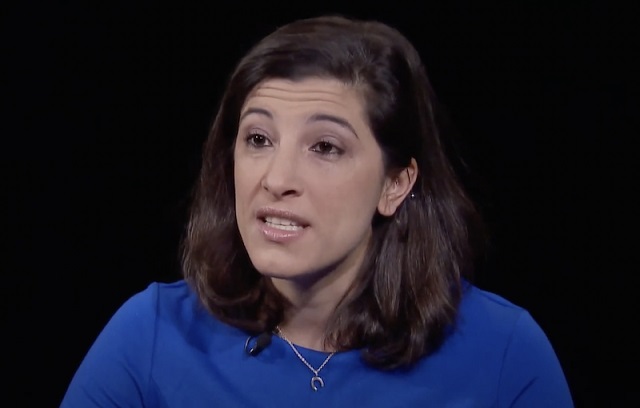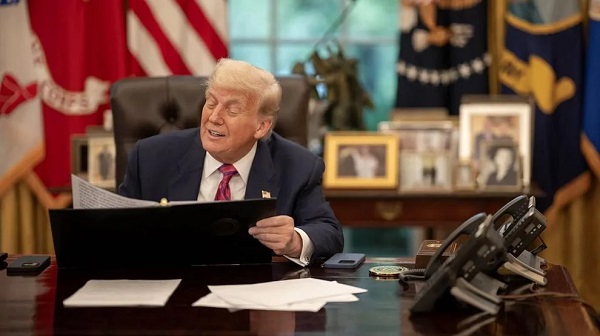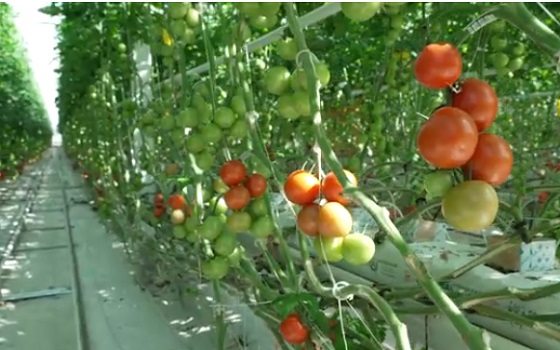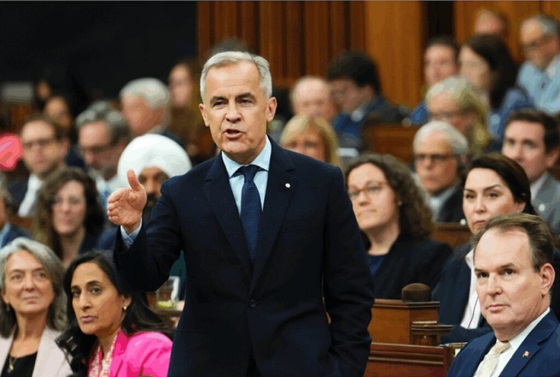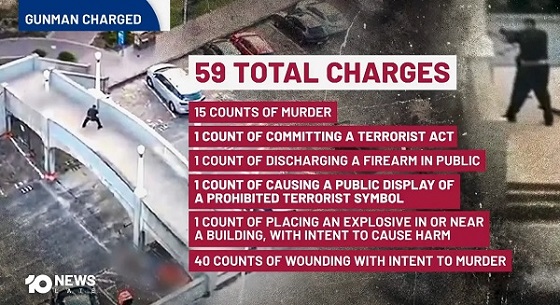Renée DiResta is the research director of the Stanford Internet Observatory (SIO)
By Andreas Wailzer
The Censorship Industrial Complex, dominated by organizations often run by ex-CIA agents, is working around the First Amendment to suppress dissent and promote a one-world government
Author and reformed climate activist Michael Shellenberger has coined the term “Censorship Industrial Complex,” an apparent reference to President Dwight D. Eisenhower’s Farewell Address in 1961, where the former Army General warned about the influence of the “military-industrial complex.”
In a recently published article, Dr. Joseph Mercola explored the Censorship Industrial Complex, how it works, and who some of the protagonists are. We will examine the following points regarding this nefarious network to understand how the censorship apparatus works:
- A key figure: Renée DiResta
- The Election Integrity Partnership and Virality Project
- The Council on Foreign Relations and the One World Government
- NewsGuard and the “middleware” approach
A key figure: Renée DiResta
Renée DiResta is the research director of the Stanford Internet Observatory (SIO). Mercola fittingly described the organization’s purpose: “[Founded] in June 2019,” the SIO “promote[s] internet censorship policies and conduct[s] real-time social media narrative monitoring.”
DiResta quickly climbed the career ladder despite being involved in a major election manipulation scandal. She previously worked for the CIA and is a member of the influential Council on Foreign Relations (CFR).
DiResta is a prominent example of the connections between the intelligence agency and the censorship industry, but she is certainly not the only one. The organizations that are deciding what is deemed “misinformation” or “hate speech” (i.e., the Censorship Industrial Complex) are often run by former CIA agents. According to Shellenberger’s research, seven former CIA executives serve on the board of the Atlantic Council, an organization partnered with the SIO through several projects.
“The Chief Strategy Officer and the Director of Federal Programs at Graphika, another DiResta partner organization, are former CIA officials,” Shellenberger writes.
In 2018, DiResta organized a false flag online operation that influenced an Alabama Senate race. Before she worked at the SIO, DiResta was the research director at a small political consultant firm, New Knowledge LLC, which received $100,000 from Reid Hoffman, founder of LinkedIn, to help the Democrat candidate win the U.S. Senate race in Alabama. New Knowledge used that money to subscribe thousands of fake Russian bot accounts to Republican candidate Roy Moore’s social media campaign. Mainstream media reports at the time claimed Moore was “backed by Russia,” even though his “Russian backers” were fake accounts created by New Knowledge. Moore’s Democratic opponent, Doug Jones, went on to win the race by a slim margin.
After the election, an internal report from New Knowledge, which detailed the Russian bot operation, was obtained by The New York Times. The report admits that: “We orchestrated an elaborate ‘false flag’ operation that planted the idea that the Moore campaign was amplified on social media by a Russian botnet.”
This revelation gained national media attention and was so scandalous that even members of the Atlantic Council (an organization that now collaborates with DiResta) publicly criticized this egregious example of election interference by New Knowledge.
“Somehow, DiResta survived this scandal and continues to be a leading spokesperson AGAINST disinformation and FOR election integrity, even though New Knowledge was caught red-handed using disinformation to interfere in a U.S. election,” Mercola writes.
Shellenberger said the reason that DiResta was made “the leader of the Censorship Industrial Complex,” next to her intellect and articulateness, is that “[l]ike other American elites, DiResta believes that it is the role of people like her to control what information the public is allowed to consume, lest they elect a populist ogre like Donald Trump, decide not to get vaccinated, or don’t accept whatever happens to be mainstream liberal opinion on everything from climate change to transgenderism to the business dealings of the president[‘s] family.”
The Election Integrity Partnership and Virality Project
The Election Integrity Partnership (EIP) was founded only months before the 2020 U.S. presidential election “to defend our elections against those who seek to undermine them by exploiting weaknesses in the online information environment.”
Mike Benz, former State Department official in the Trump administration and executive director for the Foundation for Freedom Online, explained in a video that EIP was created as a “government cut-out,” a “private” organization that de facto acts as censorship arm for the things the government cannot censor because it lacks the legal authority to do so.
One of the “partners” of the EIP is DiResta’s SIO. Benz also notes that all of the EIP’s partners are at least partly funded by the government.
In May 2020, a new organization with mostly the same “partners” as the EIP was created, the Virality Project (VP). The VP focused on censoring COVID-related content online, including factual information that “might promote vaccine hesitancy.”
READ: New ‘Twitter Files’ show gov’t-backed Stanford initiative told Big Tech to censor ‘true’ info about COVID jabs
A spokesperson from the SIO (one of the VP’s founding partners) claimed it “did not censor or ask social media platforms to remove any social media content regarding coronavirus vaccine side effects.” Perhaps the SIO did not censor content directly, but the VP that was founded by the SIO certainly did, as the Twitter Files released by Elon Musk have shown.
According to the Twitter Files published by journalist Matt Taibbi, the VP pressured social media platforms such as Twitter (now X) and TikTok to remove or flag online content. Posts flagged by VP included:
- True information that could fuel “vaccine hesitancy”
- Posts critical of vaccine passports
- True testimonies of people experiencing blood clots after receiving COVID shots
- People asking questions about possible adverse reactions from the jabs
The Council on Foreign Relations and the One World government
As mentioned above, DiResta, in addition to being a former CIA agent, is also a member of the Council on Foreign Relations (CFR), a think tank specialized in U.S. foreign policy. The globalist CFR is partly funded by the Bill & Melinda Gates Foundation and the Rockefeller Foundation.
The CFR was founded in 1921 and has heavily influenced U.S. foreign policy ever since. Most CIA directors and U.S. secretaries of defense have been members of the Council. Mercola argues that the CFR’s ultimate goal “has been to bring about a totalitarian one world government, a New World Order (NWO) with global top-down rule.”
According to the Centre for Research on Globalization, James Warburg, the son of one of the CFR’s founders, told the Senate Foreign Relations Committee in 1950: “We shall have world government whether or not you like it – by conquest or consent.”
Moreover, CFR insider and former U.S. Navy Admiral Chester Ward stated the following in his 1975 book Kissinger on the Couch:
“[The CFR has as a goal] submergence of U.S. sovereignty and national independence into an all-powerful one-world government … This lust to surrender the sovereignty and independence of the United States is pervasive throughout most of its membership … In the entire CFR lexicon, there is no term of revulsion carrying a meaning so deep as ‘America First.’”
Mercola concludes that the Censorship Industrial Complex is part of the network that seeks to establish a one-world government.
“Those who oppose America First policies do so because they’re working on behalf of a network that seeks to eliminate nationalism in favor of a one-world government, and DiResta is part of that club,” he writes.
NewsGuard and the ‘middleware approach’
In another condensed video, Benz explains how the Censorship Industrial Complex is now using so-called “middleware” organizations like the news rating site NewsGuard to suppress dissent from the mainstream narratives.
According to Benz, the Censorship Industrial Complex is anticipating a loss in the Missouri v. Biden Supreme Court case, which “threatens to ban all government coordination of domestic censorship with a few exceptions[.]”
To circumvent these possible legal restrictions, the government is propping up “intermediary censorship mercenary firms like NewsGuard.”
READ: Elon Musk slams leftist rating group NewsGuard as ‘scam’ that ‘should be disbanded immediately’
By funding these “private” organizations, the deep state government agencies can “effectively circumvent the First Amendment prohibitions on running a comparable thing out of the DHS [Department of Homeland Security].”
However, the idea that NewsGuard is somehow independent from the government is wholly divorced from reality. In 2021, the Department of Defense awarded NewsGuard $750,000 for its project “Misinformation Fingerprints,” which aims to combat what it calls “a catalogue of known hoaxes, falsehoods and misinformation narratives that are spreading online.”
Moreover, Benz notes that NewsGuard’s Advisory Board consists of “an all-star apex predator caste of the national security state,” including
- retired Four-Star General Michael Hayden, who was formerly the head of the CIA and NSA,
- Richard Stengel, former Undersecretary of State,
- Tom Ridge, former head of the DHS,
- and Anders Fogh Rasmussen, former head of NATO.
By propping up “middleware” companies such as NewsGuard that are not technically part of the government, the Censorship Industrial Complex is able to work around possible First Amendment restrictions, as websites that receive a negative rating from NewsGuard will have reduced visibility on Big tech platforms and search engines. The negative rating by NewsGuard also provides a pretext for private Big Tech platforms to label outlets as spreaders of “misinformation” and censor them outright.
“There’s no clear solution to this threat, other than to continue pushing back against any and all efforts to legalize, standardize and normalize censorship,” Mercola writes in his conclusion. “To vocally object, to refuse using middleware like NewsGuard, and to boycott any company or organization that uses middleware or engages in censorship of any kind.”
Related
